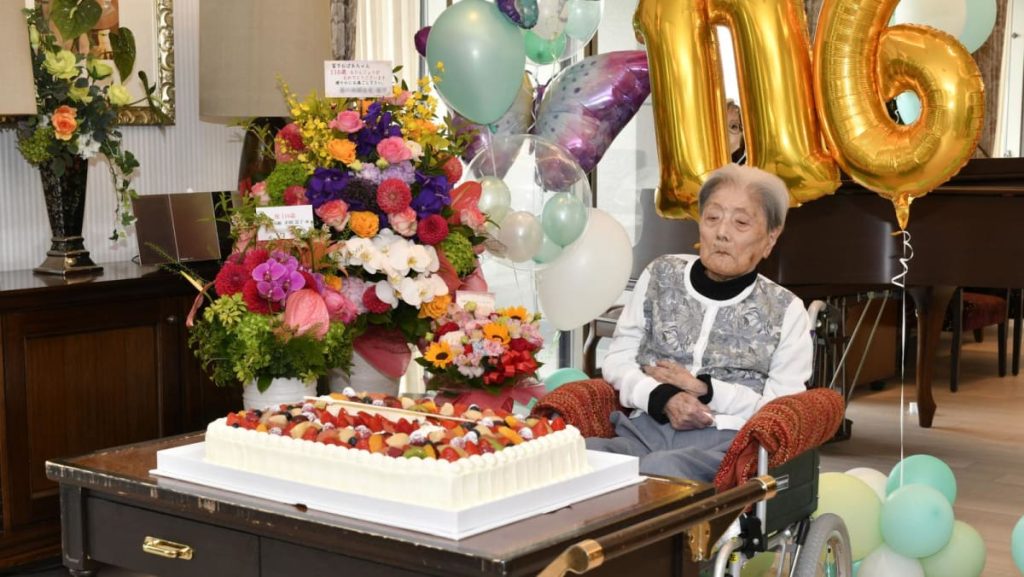Tomiko Itooka, a remarkable woman who witnessed over a century of global transformation, passed away peacefully at the age of 116 on December 29, 2024, in a nursing home in Ashiya, Japan. Born in Osaka, near Ashiya, on May 23, 1908, just months before the Ford Model T revolutionized transportation, Itooka’s life spanned an era of unprecedented change, encompassing two world wars, numerous pandemics, and groundbreaking technological advancements that reshaped society. Her longevity, a testament to both personal resilience and the advancements in healthcare and living standards, made her a symbol of endurance and a source of inspiration for many in her community and beyond. Upon the passing of Maria Branyas Morera of Spain in August 2024, Itooka became recognized as the world’s oldest living person, further highlighting Japan’s prominent position in global longevity statistics.
Itooka’s life story, while largely undocumented in the provided text, hints at a life filled with diverse experiences. Her early years likely coincided with Japan’s rising industrialization and growing global influence in the early 20th century. As a young woman, she engaged in athletic pursuits, playing volleyball, suggesting an active and social lifestyle. Her later years, spent in relative peace and comfort, were marked by simple pleasures like enjoying bananas and Calpis, a popular Japanese soft drink. These small details offer a glimpse into a life that witnessed the world transform dramatically around her, from the horse-drawn carriage era to the digital age, from global conflicts to periods of relative peace. She raised a family of four children and had five grandchildren, contributing to the continuity of generations and leaving behind a legacy that extends beyond her impressive lifespan.
While Itooka’s individual story remains largely untold, her longevity reflects broader demographic trends in Japan. The island nation consistently boasts some of the highest life expectancies globally, with women particularly outliving their male counterparts. This demographic phenomenon, while a testament to advancements in healthcare, nutrition, and overall living standards, also presents significant challenges for Japan’s social and economic landscape. Itooka’s passing serves as a reminder of the growing elderly population in Japan and the complex societal issues that accompany it. Her long life signifies not only the triumphs of modern medicine and healthcare but also the looming demographic crisis facing the country.
Japan’s aging population, characterized by a declining birth rate and increasing life expectancy, has created a demographic imbalance with far-reaching consequences. As of September 2024, over 95,000 Japanese citizens were centenarians, with women accounting for a staggering 88% of this demographic. This disproportionately large elderly population places a significant strain on the nation’s social security system, healthcare infrastructure, and overall economy. The shrinking workforce struggles to support the growing number of retirees, leading to concerns about economic stagnation and the sustainability of social welfare programs. Itooka’s long life, while a cause for celebration, also underscores the urgent need for innovative solutions to address these demographic challenges.
The social and economic implications of Japan’s aging population are multifaceted and demand comprehensive strategies. The rising cost of elder care, including medical expenses, long-term care facilities, and pension payments, places a considerable burden on government budgets and working-age individuals. The shrinking workforce leads to labor shortages, impacting economic productivity and potentially hindering future growth. Moreover, the changing demographic structure necessitates a re-evaluation of social support systems and infrastructure to adequately meet the needs of an increasingly elderly population. Finding a sustainable balance between supporting the elderly and fostering economic growth remains a central challenge for Japan.
Itooka’s passing, while a natural conclusion to a remarkably long life, serves as a poignant reminder of the demographic realities facing Japan. Her life, spanning a period of unprecedented global change, highlights both the triumphs and challenges of increasing longevity. While celebrating individual longevity, it is crucial to address the broader societal implications of an aging population. Japan’s experience serves as a case study for other nations grappling with similar demographic shifts, emphasizing the need for proactive policies and innovative solutions to ensure the well-being of both the elderly and the broader population. The balance between celebrating long life and addressing the societal challenges it presents will continue to be a key focus for Japan and other nations navigating the complexities of an aging world.

